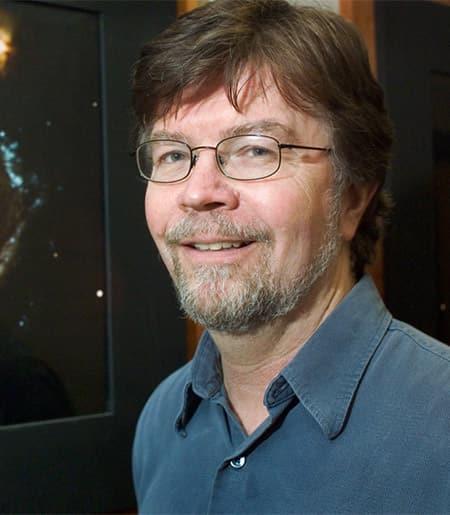Overview
James Cordes's research interests include radio astronomy, neutron stars, pulsars, the interstellar medium, the search for extraterrestrial intelligence, signal processing techniques, statistical inference, and topics in computer science. He regularly makes observations using radio telescopes in Arecibo, Puerto Rico, the Very Large Array in New Mexico, the Parkes telescope in Australia, and the Very Long Baseline Array, headquartered in New Mexico. Cordes also makes infrared and optical observations using the Hale Telescope at Palomar and has taken part in joint radio and gamma-ray observations using the Compton Gamma-ray Observatory and X-ray Timing Explorer. He also uses the Hubble Space Telescope and the Chandra X-ray Satellite in his multiwavelength work. He is currently planning observations using the upgraded Arecibo Observatory and a new multiple-feed receiver system that involve deep searches for radio pulsars. He is also heavily involved in the Square Kilometer Array project, a next-generation radio telescope.
Publications
- J.M. Cordes, R.M. Shannon. "Rocking the lighthouse: circumpulsar asteroids and radio intermittency." Ap. J. 682(2). (2008)
- J.S. Deneva, J.M. Cordes, T.J.W. Lazio. "Discovery of three pulsars from a galactic center pulsar population." Ap. J. Letters. 702. (2009).
- B. Knispell, B. Allen, J.M. Cordes et al. "Pulsar discovery by volunteer computing." Science. 329(5997), (2010).
- K. Liu, N. Wex, M. Kramer, J.M. Cordes, T.J.W. Lazio. "Prospects for probing the spacetime of Sgr A* with pulsars." Ap. J. 747(1). (2012).
- J.M. Cordes, R.M. Shannon. "Minimum requirements for detecting a stochastic gravitational wave background using pulsars." Ap. J. 750(2). (2012).
- J.M. Cordes, F.A. Jenet. "Detecting gravitational wave memory with pulsar timing." Ap. J. 752(1). (2012)
- R.S. Wharton, S. Chatterjee, J.M.Cordes, J.S. Deneva, T.J.W. Lazio. "Multiwavelength constraints in pulsar populations in the galactic center." Ap. J. 753(2). (2012).
In the news
- Cake-pan telescope searches the sky for fast radio bursts
- After 15 years, gravitational waves detected as cosmic ‘hum’
- Rapid-fire fast radio burst shows hot space between galaxies
- Team reveals first image of the black hole at our galaxy’s heart
- Cornell faculty contribute to Astro2020 decadal survey
- Detected: 1,652 radio bursts from 3 billion light-years away
- $2M in New Frontier Grants boost high-impact A&S research
- In the emptiness of space, Voyager 1 detects plasma ‘hum’
- NSF to decommission Cornell-designed Arecibo telescope
